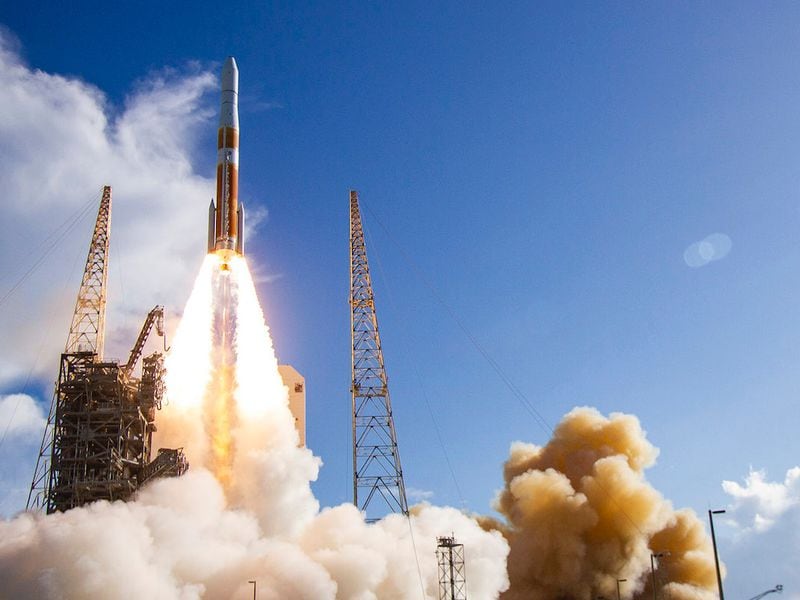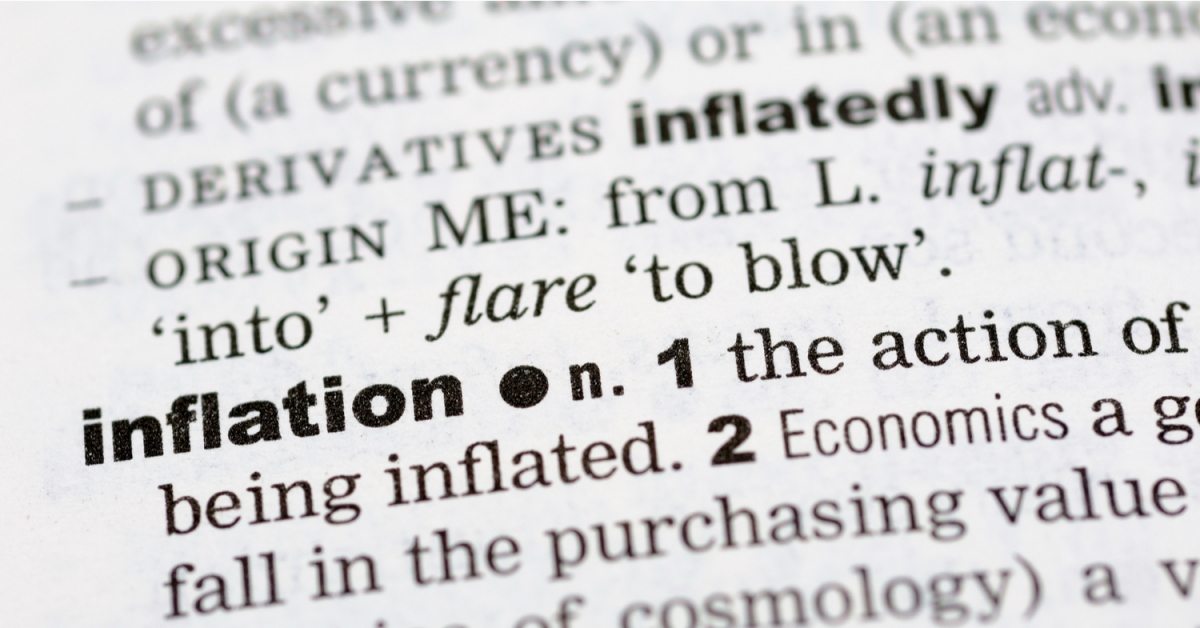First Mover: Bitcoin at Center Stage (and Record High) as Mastercard, BNY Go Crypto
Bitcoin’s price hits new all-time high over $48,000 despite U.S. Treasury Secretary Janet Yellen’s warning that cryptocurrencies are prone to illicit uses..

First Mover: Bitcoin at Center Stage (and Record High) as Mastercard, BNY Go Crypto
Price Point
Bitcoin jumped more than 6% Thursday to a new record high of $48,297 after Mastercard confirmed CoinDesk’s exclusive Wednesday that the payments-processing giant plans to let merchants receive payments in cryptocurrency starting later this year.
And BNY Mellon, the world’s largest custodian bank with some $41 trillion of assets in safekeeping, said Thursday it’s moving into crypto.
“Bitcoin and its peers are, quite simply, going to be part of the mainstream financial universe sooner rather than later,” Simon Peters, cryptoasset analyst for the trading platform eToro, wrote Thursday. “I expect demand to surge and see bitcoin prices hitting at least $70,000 by the end of this year.”
In traditional markets, trading in Asia was muted ahead of Lunar New Year public holidays, with China breaking for a week. (The year of the Ox is seen as bullish for bitcoin, of course.) U.S. stock futures pointed to a higher open as investors focused on the prospect of higher inflationas the economy accelerates and governments and central banks maintain aggressive stimulus policies. Gold weakened 0.1% to $1,842 an ounce.
The News
BNY Mellon gets in: Bank beats rivals JPMorgan, Citigroup to the punch with plan for new digital custody offering later this year. “It will be driven by client interest and demand,” Mike Demissie, head of advanced solutions at BNY Mellon, told CoinDesk’s Ian Allison in an interview.
Mastercard too: Card network plans to let merchants receive payments in cryptocurrencies later this year. The news was reported Wednesday by CoinDesk’s Danny Nelson and later confirmed by the company in a web post. “Whatever your opinions on cryptocurrencies – from a dyed-in-wool fanatic to utter skeptic – the fact remains that these digital assets are becoming a more important part of the payments world,” according to the Purchase, New York-based company.
Yellen’s yellow light: U.S. Treasury Secretary Janet Yellen said the use of cryptocurrencies for illicit purposes are a “growing problem,” while adding that she sees “the promise of these new technologies.” The remarks, made Wednesday at a roundtable on financial-industry innovation and published in a Treasury Department press release, could fuel some traders’ concerns that the U.S. government might mount a crackdown as cryptocurrencies gain wider acceptance.
Amazon in Mexico: E-commerce giant preparing to launch a digital-currency project in Mexico, job postings show. It’s not clear how much the planned foray relates to “Amazon Coins,” an 8-year old virtual currency initiative that allows holders to transact across web games.
Market Moves
Bitcoin at center of conversations at center of global markets

Inflation has all of a sudden become the biggest issue in global markets. and as with all things involving humans, there’s a lot of disagreement to go around.
The debate ranges from whether the Federal Reserve has the willpower or inclination to snuff out inflation if prices really starts to tick up to whether bitcoin is really the solution for big investors or corporations looking to protect themselves from the potential debasement of the U.S. dollar.
One thing’s for certain: The three most important U.S. officials driving the economic strategy are President Joe Biden, Treasury Secretary Janet Yellen and Fed Chair Jerome Powell. And all three are broadly in alignment that the country’s focus at this point should be on a stimulus-fueled recovery that will create lots of jobs. Inflation isn’t really a concern right now. Worry about that later, the thinking goes.
“The Fed will continue to support the devastated labor market with plenty of brrrrrrrrrrrrrr,” Mati Greenspan, founder of the foreign-exchange and cryptocurrency analysis firm Quantum Economics, wrote Wednesday. That two-consonant word, for those who missed the popular meme last year, is the elongated version of an onomatopoeic rendition of the sound a money printer ostensibly makes.
A big data point on inflation arrived Wednesday from the U.S. Labor Department, which reported that the “core” consumer price index, which excludes food and energy items, was unchanged in January from December levels. Over the past 12 months, it’s up 1.4%. No big deal, right? That’s well below the Fed’s target of 2% annually.
The real bogeyman, though, isn’t what’s happening with inflation now as the lingering pandemic continues to take a toll on economic activity, suppressing consumer demand, but what happens when activity resumes in full and people get out and about and start spending all the money they’ve saved up.
So big investors are fixated on bond-market signals showing fast-rising expectations for inflation in the future. The average level implied over the next five years recently ticked above 2%, and the chart shows a steep slope upward to the right:

The U.S. government’s budget deficit has totaled $736 billion over the first four months of the year, a record for the period and 89% higher than a year earlier, according to a statement released Wednesday. The figures don’t even account for the $1.9 trillion stimulus package that Biden is pushing Congress to pass despite reluctance from the opposition Republican Party as well as influential members of his own Democratic Party.
It goes without saying that any fresh stimulus would follow a lot that’s already been done, both on the fiscal and monetary sides: The Federal Reserve has created about $3.3 trillion of new money since the start of 2020, pushing the size of its balance sheet to nearly $7.5 trillion for the first time.
“With no hints of scaling back the Fed’s massive asset purchases, Powell is a super dove,” Oanda Senior Market Analyst Edward Moya wrote Wednesday after reviewing a speech Wednesday by the Fed chair.
Bitcoin over the past year has become one of the most popular ways for big investors to play the “reflation trade,”and there’s no shortage or diversity of opinions on the cryptocurrency. It’s a digital version of gold or it’s a scam benefiting from a tulip-like mania, with a lot of space in between. Here’s a quick rundown of comments that emerged Wednesday.
- Bank of Canada Deputy Governor Timothy Lane: “The recent spike in their prices looks less like a trend and more like a speculative mania.”
- David Rosenberg, former chief economist for Bank of America, now at his own firm: “You’re buying bitcoin on the assumption that some bigger fool is going to buy it at a higher price.”
- Three Morgan Stanley analysts, in a slide presentation. “Central bank policies could be setting up for accelerating inflation. Investing in bitcoin provides a hedge against that risk, especially if supply chain payments can be migrated from fiat to bitcoin.”
- Twitter Chief Financial Officer Ned Segal: “We’ve done a lot of the upfront thinking to consider how we might pay employees should they ask to be paid in bitcoin, how we might pay a vendor, if they actually pay in bitcoin, and whether we need to have bitcoin on our balance sheet should that happen.”
- Morgan Stanley Chief Global Strategist Ruchir Sharma: “Even if bitcoin’s price pops, as it has before, the rush of 2020 can’t be dismissed as an irrational mania. Cryptocurrencies are still young, they still face growing pains. But they also promise speed, transparency, and low fees that traditional payment channels cannot match. They satisfy a growing demand for a digital alternative to gold, an asset likely to protect investors from massive money printing and the threat of inflation. To younger investors, `crypto’ already evokes digital, stable and good, not shadowy and sinister. The rest would be well advised to recognize that the currency world is changing, or risk being left behind.”
- Bank of America’s research investment committee: “As a long-term store of value, cryptocurrencies might be attractive, but only for investors who can tolerate substantial volatility.”
- Nouriel Roubini, economics professor at New York University, appearing on Wednesday’s “First Mover” show on CoinDesk TV: “In the case of bitcoin, it doesn’t have any income, it doesn’t have any use, it doesn’t have any utility. So what’s the value of it, based on what? Based on no intrinsic value, and purely a speculative bubble.”
- Mark Haefele, chief investment officer for global wealth management at Swiss banking giant UBS: “The basic function of a modern currency is to store value. By contrast, the diminishing incremental supply of bitcoin has made ‘bubbling’ one of its basic functions.”
To sum up: The prospect of future inflation has become a central topic for investor conversations about global markets and the economy, and bitcoin is at the center of those.
With prices for the cryptocurrency up 55% already in 2021, outperforming almost everything in traditional markets for the third straight year, Wall Street analysts and mainstream corporate executives are no longer shrinking from the discussion.
Bitcoin Watch
“Rich list” grows; options market sees low odds of $100K in 2021

Bitcoin’s “rich list,” consisting of blockchain addresses with at least 1,000 coins, continues to grow, a sign of sustained accumulation by large holders also known as whales, CoinDesk’s Omkar Godbole writes.
- Tally hits fresh record high of about 6.1 million on Wednesday, surpassing the previous peak around 5.75 million reached Jan. 8, according to data provider Glassnode.
- The data, coupled with the persistent positive Coinbase premium, a sign of institutional demand, suggests the path of least resistance for the cryptocurrency is to the higher side. NOTE: Coinbase premium is the gap between Coinbase’s BTC/USD pair and Binance’s BTC/USDT pair involving the tether stablecoin, according to the South Korea-based on-chain data site CryptoQuant.
- Options market, however, is pricing low odds of a rally into six figures this year.
Token Watch
Binance coin (BNB), FTX token (FTT), Huobi token (HT): Utility tokens for centralized exchanges hit all-time highs.
- Doggie-faced meme token’s surging price (1,472% year-to-date) brings new focus to programmers’ historically scattered efforts to develop blockchain.
- Castle Island’s Nic Carter tells CNBC that “a lot of retail punters are going to lose money on dogecoin in the long term because there’s really not much there in terms of interesting technology.”
- Tesla CEO Elon Musk tweets that he “bought some dogecoin” for his son, “so he can be a toddler hodler.” (Tesla shares fell 5.3% Wednesday, the biggest decline in a month.)
- Wallet holding almost $3B of dogecoin reportedly placed 20 transactions for 28.061971 DOGE, which corresponds to Elon Musk’s birth date.










